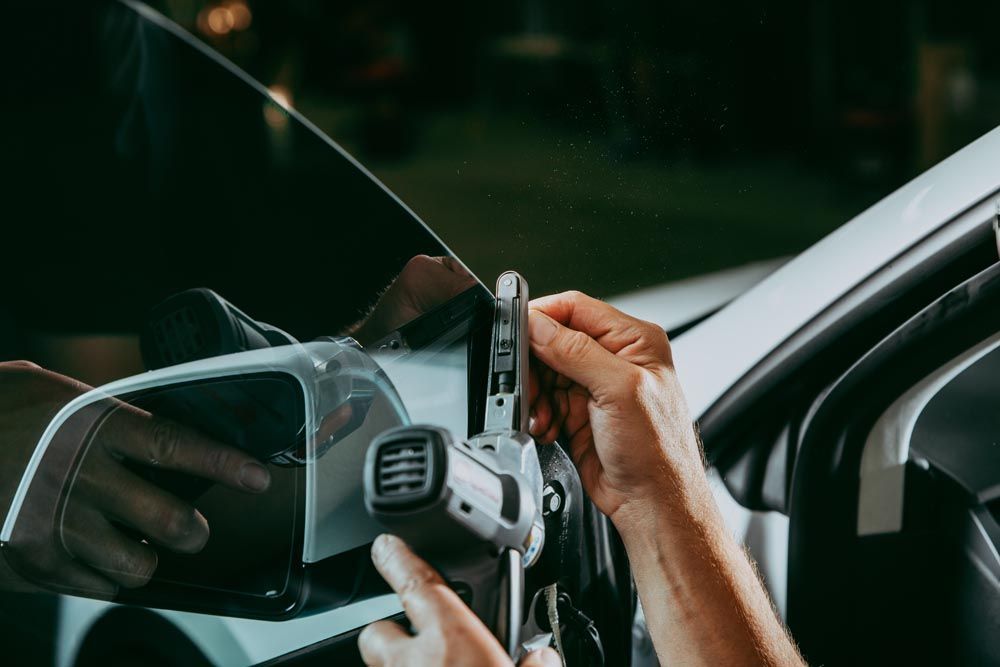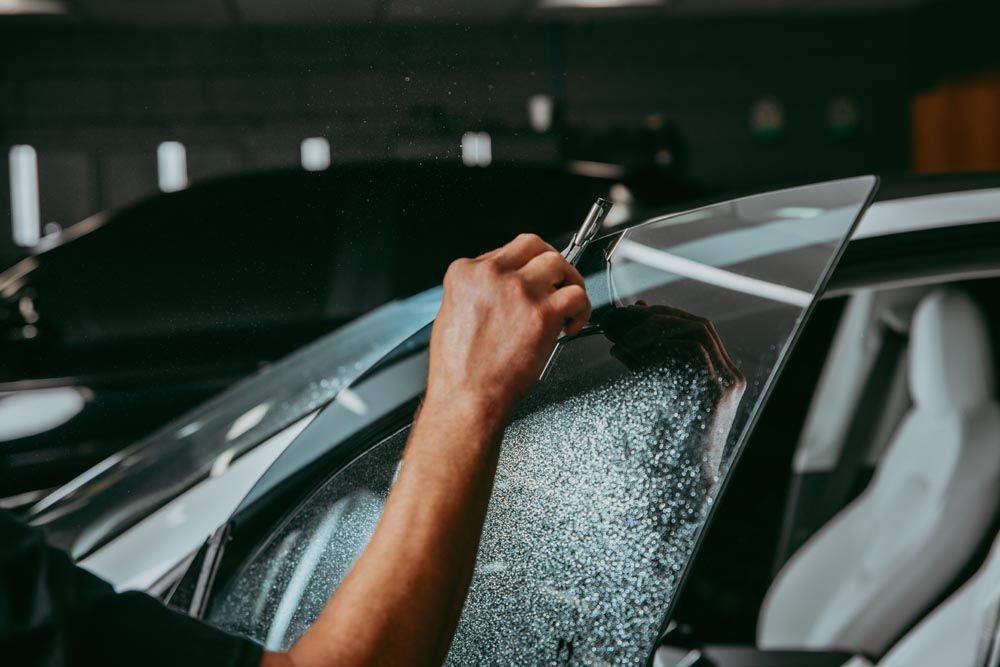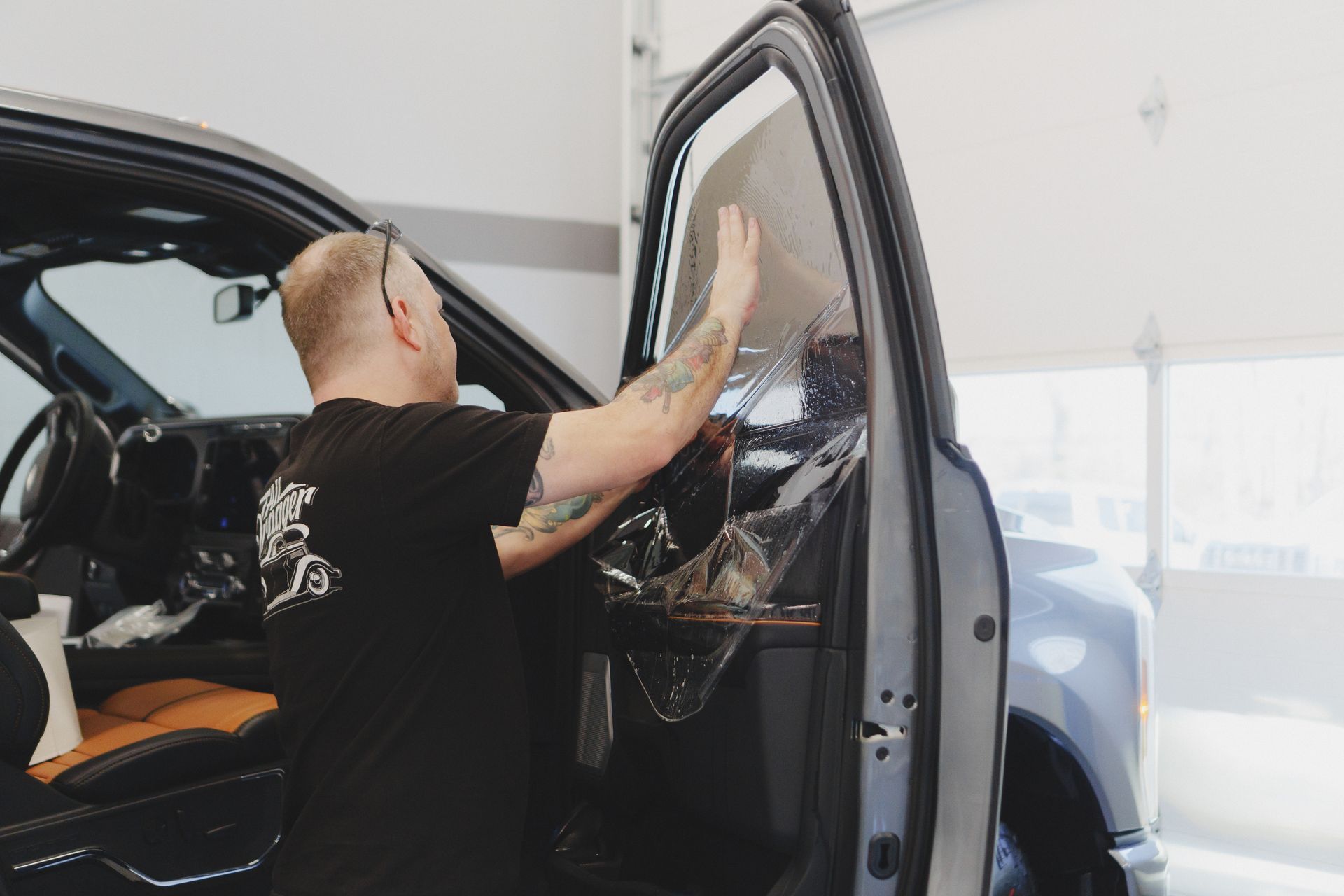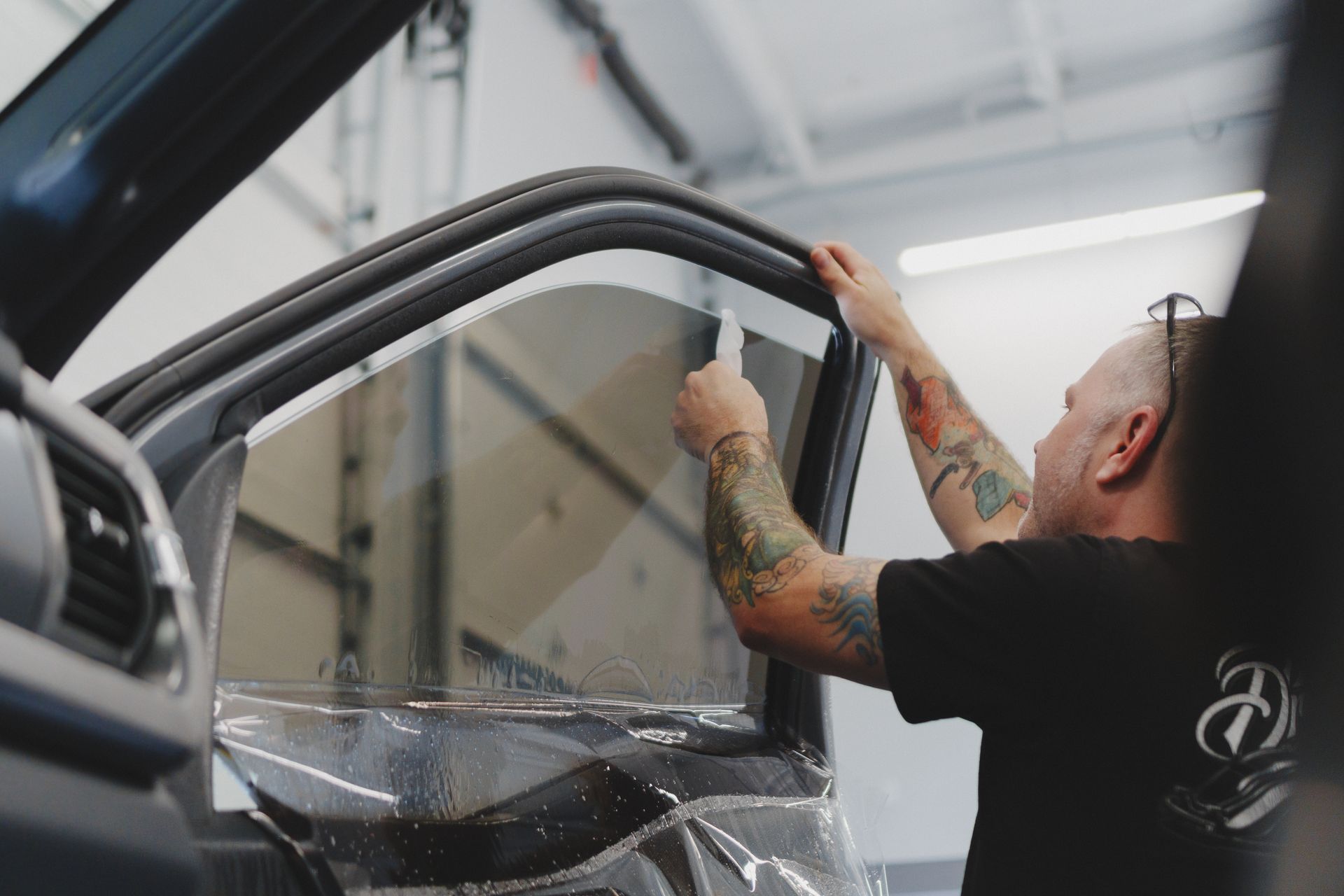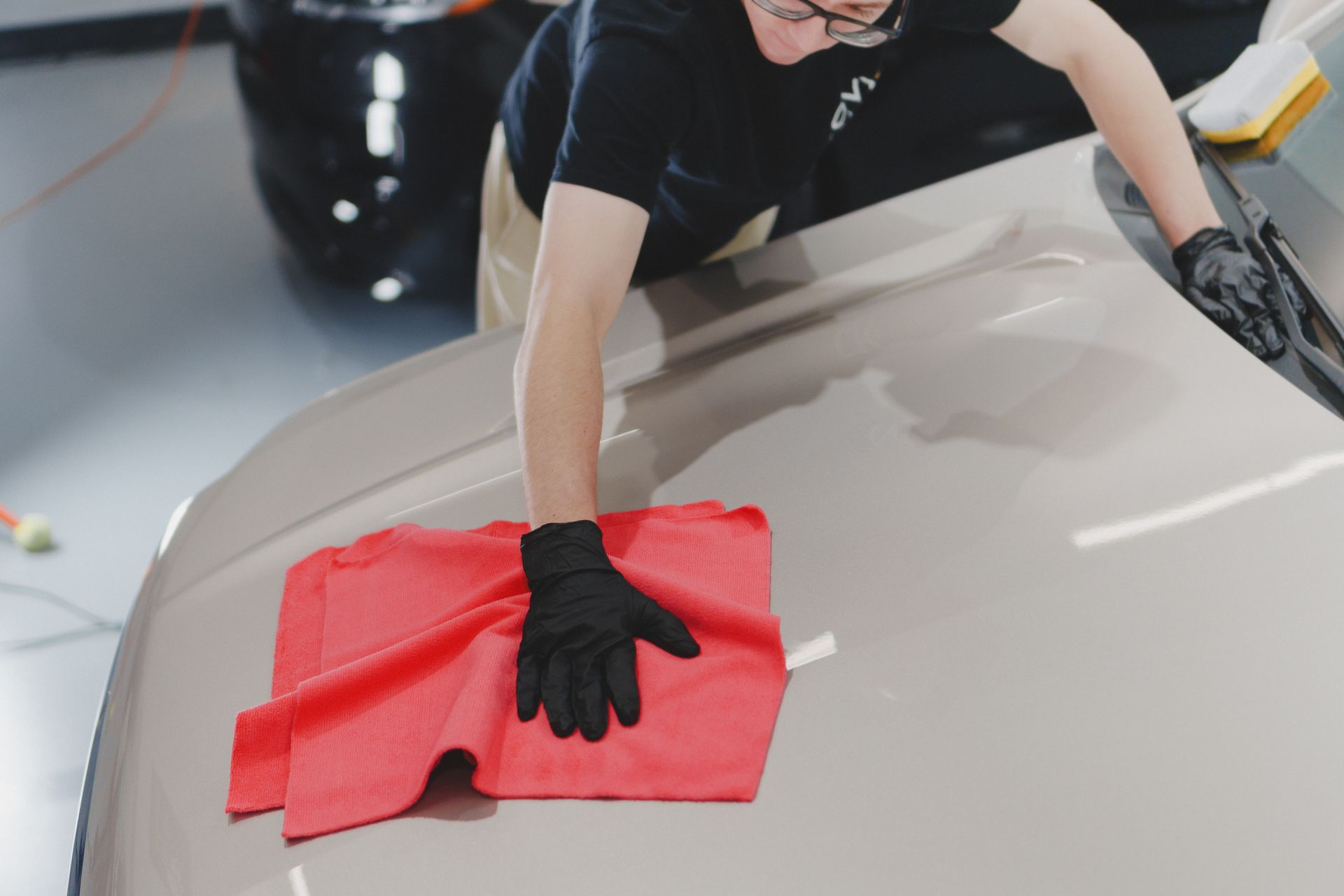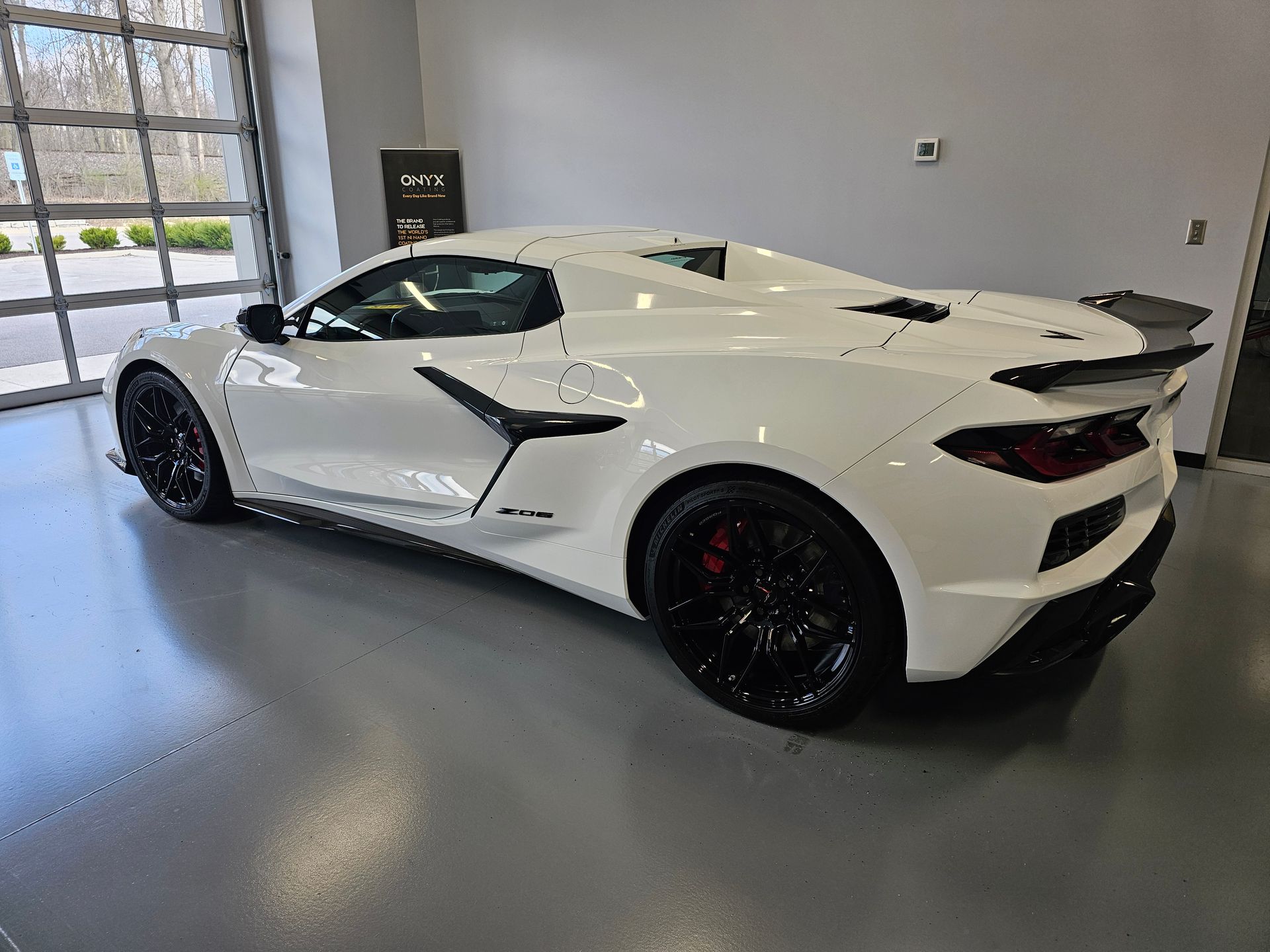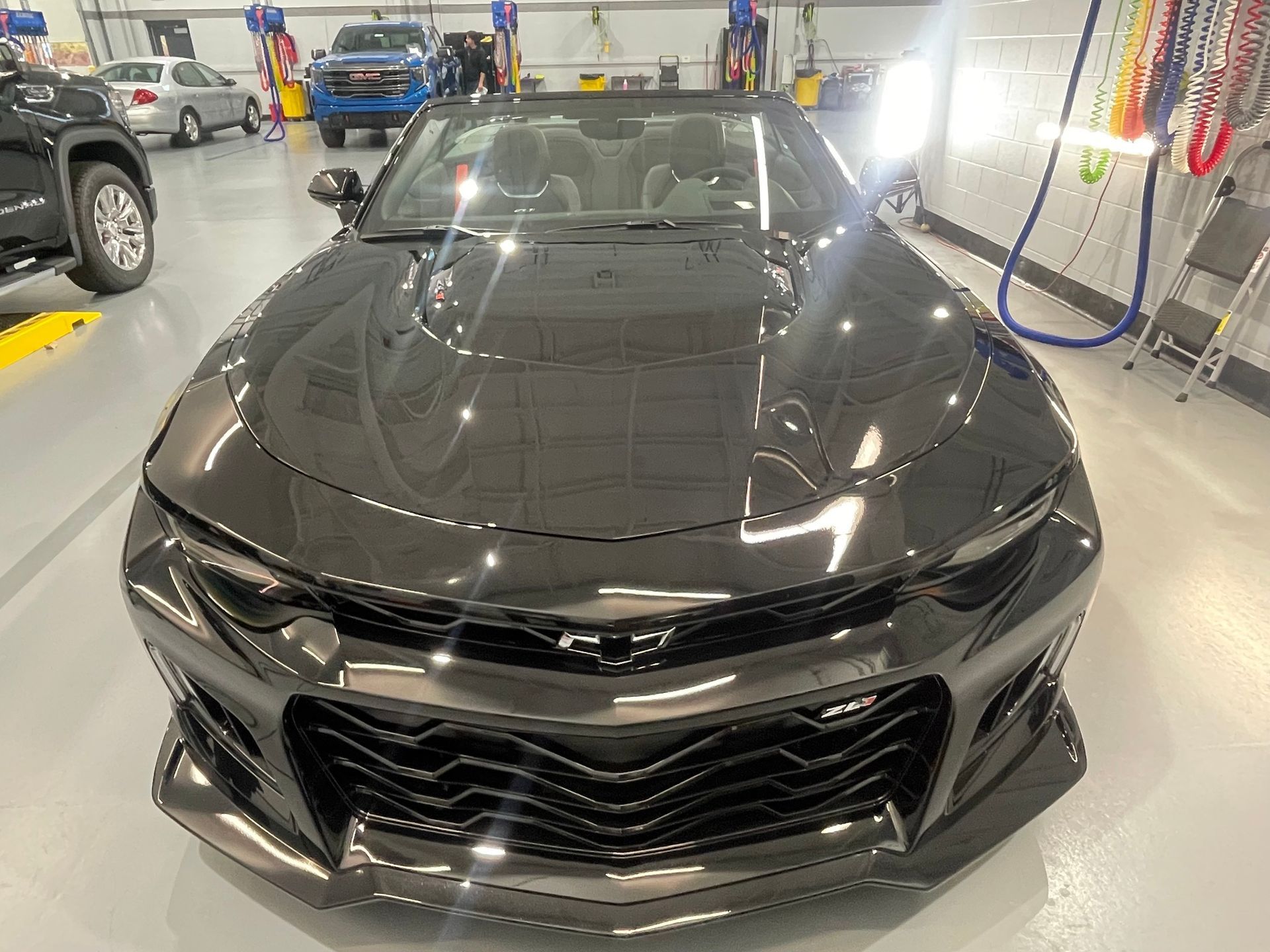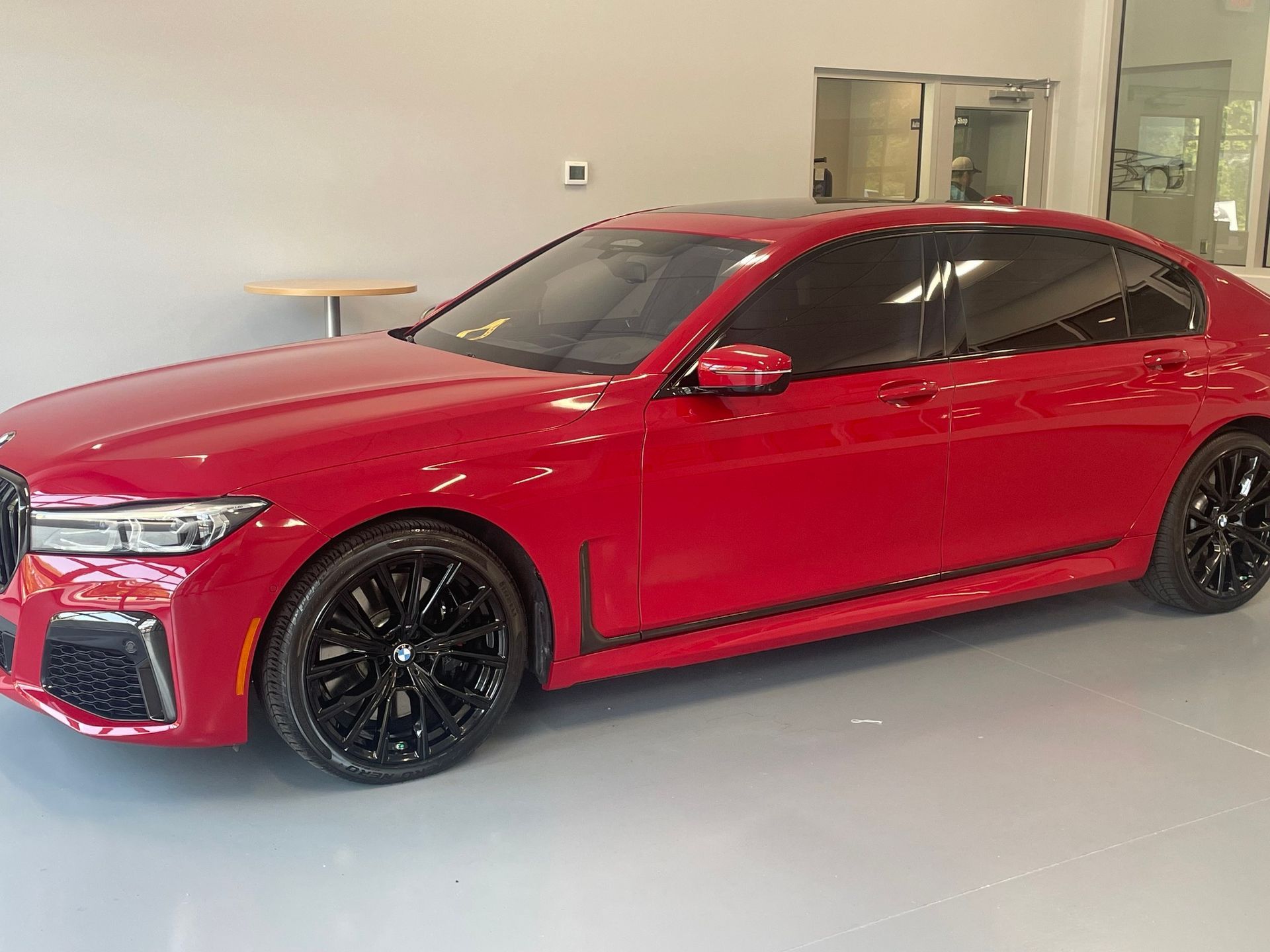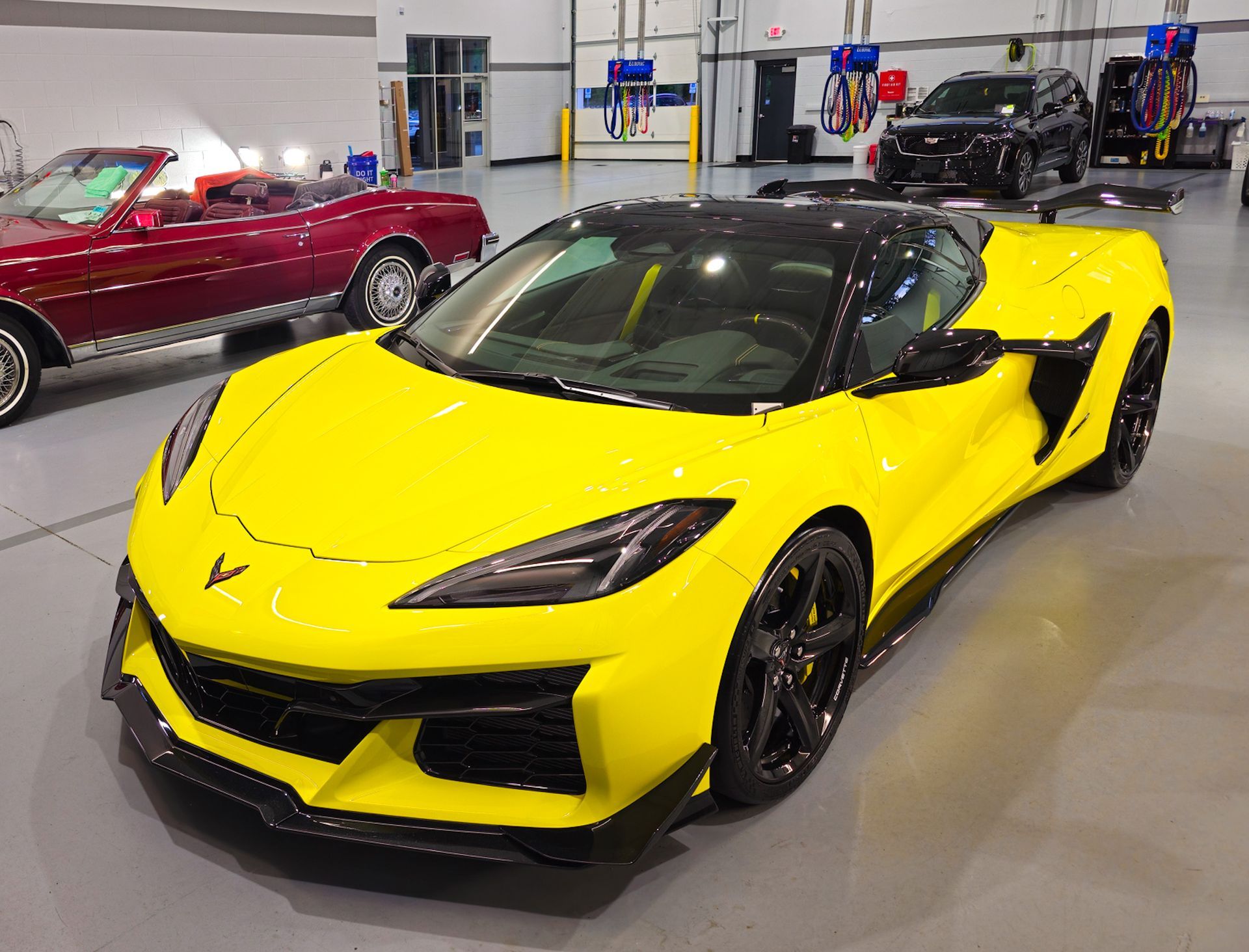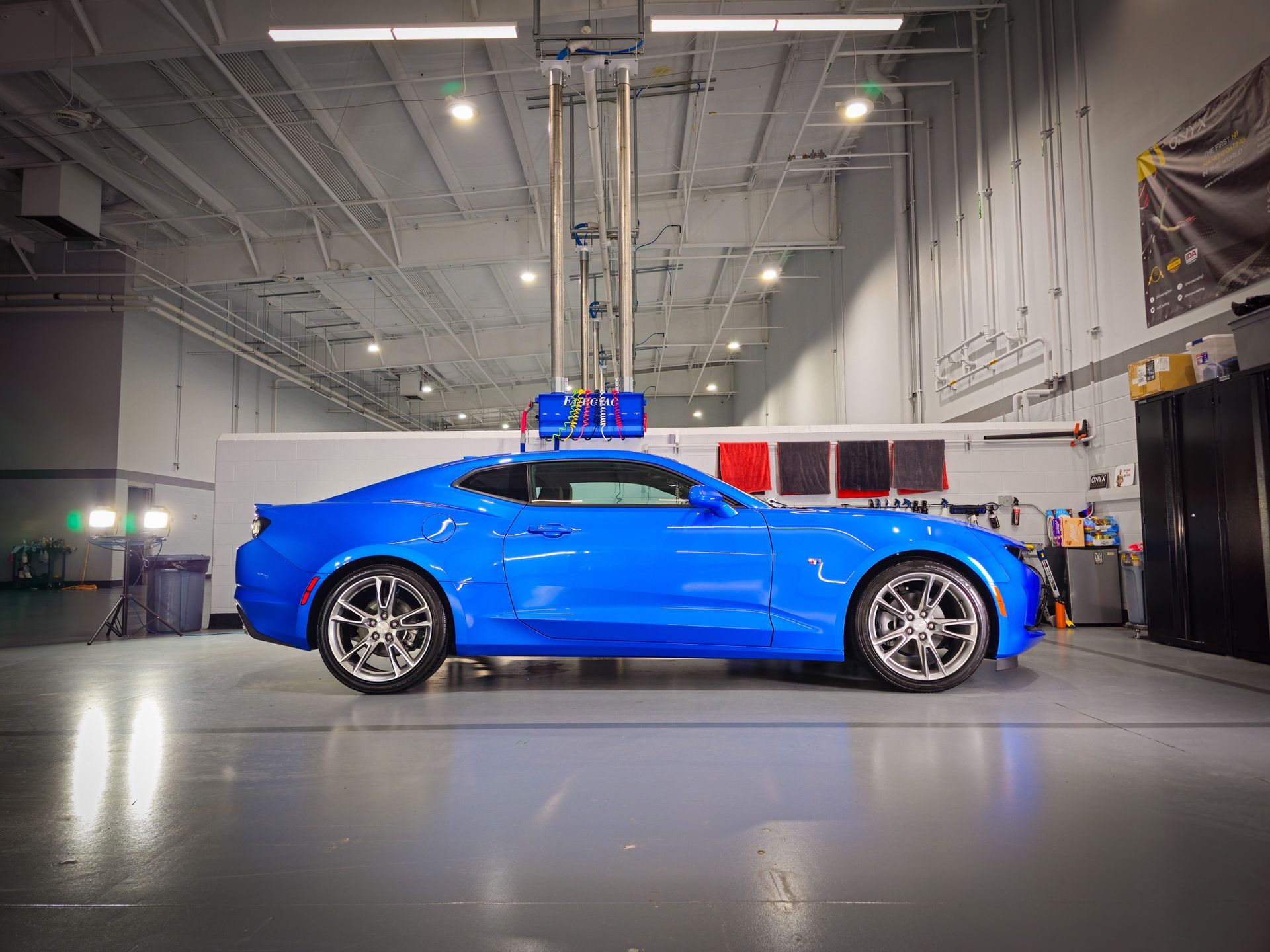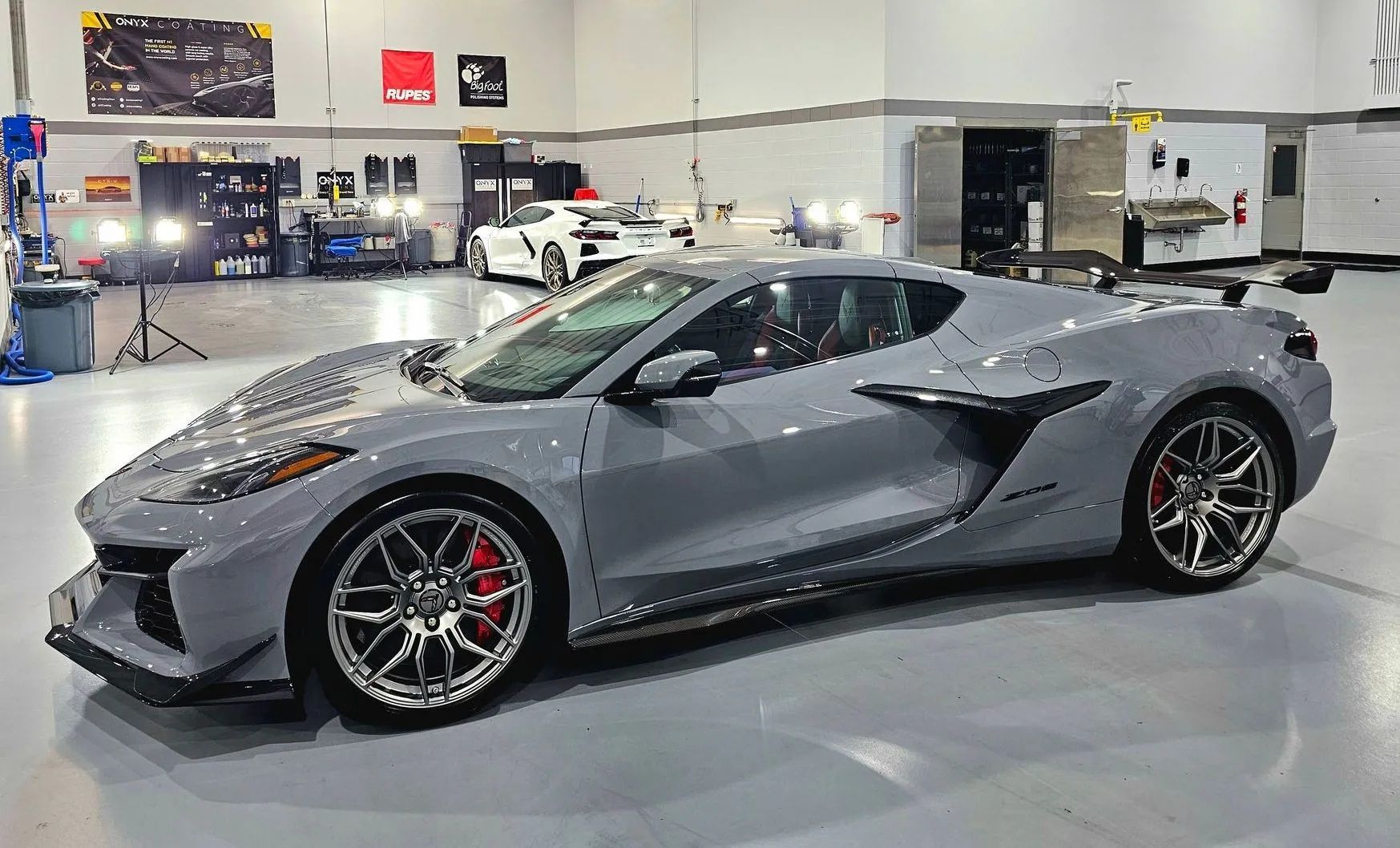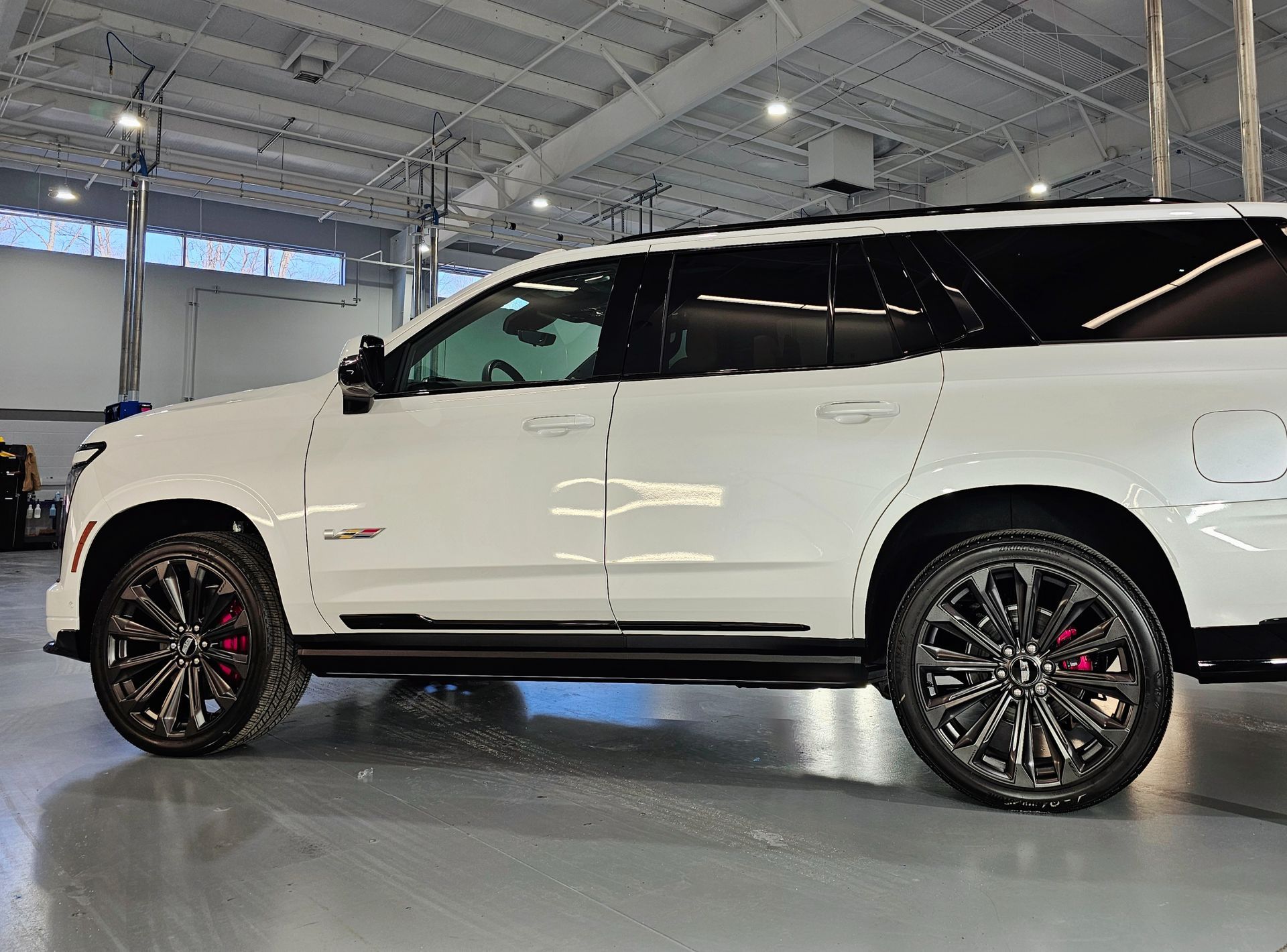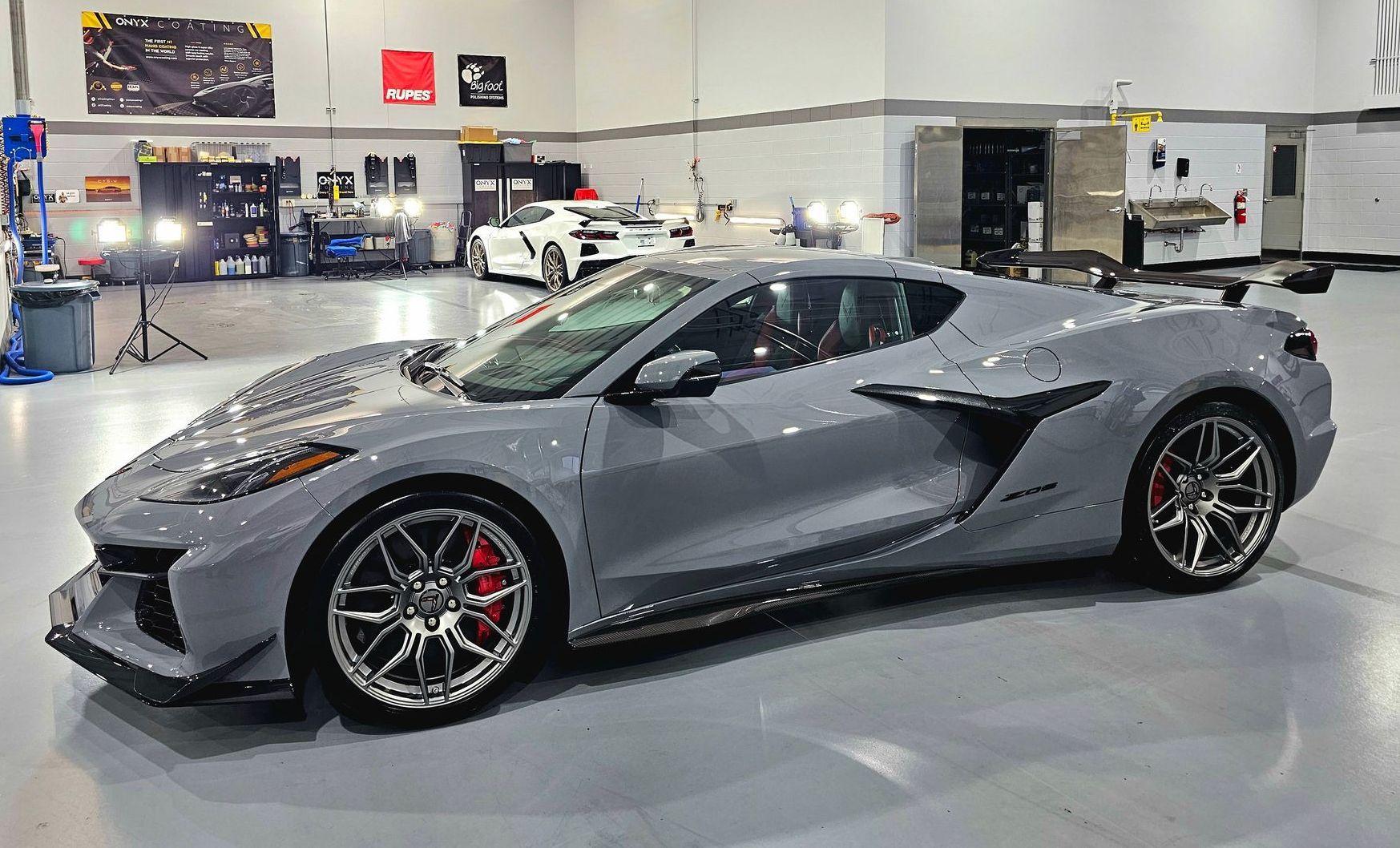How Does Window Tinting Work? A Simple Guide to Heat and UV Protection
CALL (260) 436-9274
When you hear the term "window tinting," you might think about sleek cars cruising down the street or homes that look extra fancy. But it’s not just about looks; window tinting is a practical upgrade that can make life easier and more comfortable. Have you ever jumped into your car on a hot day, only to be greeted by a suffocating wave of heat? That’s where window tinting comes in—it can help block sunlight, reduce glare, and keep interior cooler.
Window tinting works by applying a specialized polyester film that either reflects or absorbs sunlight, which helps manage heat, glare, and UV radiation. The film's composition allows for selective light transmission while blocking harmful rays, enhancing privacy and improving comfort within vehicles or spaces.
What is Auto Window Tinting?
Auto window tinting involves applying a specialized film to the windows of your vehicle, either on the interior or exterior of the glass. This film is designed to modify the amount of light that passes through, offering a variety of benefits. The primary purpose of auto window tinting is to reduce glare, control heat, and block harmful UV rays. It also enhances privacy while improving the overall appearance of your car.
Imagine driving on a bright, sunny day—without tint, the glare can be uncomfortable and distracting. Window tint acts like a permanent pair of sunglasses for your car! It helps minimize glare, making your driving experience much more comfortable and less straining on your eyes. In addition, many window tint films block up to 99% of UVA and UVB rays, protecting your skin and your vehicle’s interior from harmful sun damage and fading.
Key Principles
There are several principles at play when it comes to how window tint works:
- Reflection: As sunlight strikes tinted glass, a portion reflects off the surface, preventing heat from entering the space. High-quality films often employ metal particles in their coatings that enhance this reflective property.
- Absorption: Another concept is absorption, where the film absorbs sunlight instead of reflecting it all away. This reduces glare while helping regulate temperature inside buildings or vehicles—acting as a buffer between external temperatures and internal comfort.
- Radiation Control: Tints manage radiation from the sun by minimizing infrared rays that lead to heat buildup—especially oppressive during summer months. This helps keep the interior of your vehicle or building cooler, making the environment more comfortable and energy-efficient.
- Transmittance: Finally, films are measured in terms of visible light transmission (VLT), indicating how much visible light passes through them. With ranges typically between 5% (very dark) and 70% (light tint), this metric influences how tinted surfaces appear.
The Installation Process Explained
Proper installation is the cornerstone of effective window tinting, significantly impacting both its appearance and longevity. While DIY attempts can sometimes work, many find that professional installation yields superior outcomes due to greater expertise and access to specialized tools. Understanding the step-by-step process is essential, whether you're tackling this project yourself or hiring a professional.
Step-by-Step Installation
Achieving a professional window tint installation involves careful preparation and attention to detail. From cleaning the glass to ensuring a smooth application, each step contributes to a flawless finish. Here's an overview of the key steps involved in tinting your vehicle’s windows:
- Preparation and Cleaning: Before applying the tint, it’s crucial to thoroughly clean the glass to remove any dust, dirt, or debris. Any leftover particles can trap air beneath the film, causing bubbles and imperfections. Many professionals use a mix of water and a few drops of soap to clean the surface, creating a slightly slippery surface that makes the film easier to apply.
- Measuring and Cutting the Film: Accurate measurements are essential to avoid wasted material and frustration. Always cut the tint slightly larger than the window size to allow for adjustments during installation. Use a sharp blade to ensure clean, precise cuts; jagged edges can complicate the process and result in issues later.
- Applying the Film: Start by spraying the water and soap solution onto the window to lubricate the surface. This allows the film to be placed without sticking immediately. Carefully align the tint against the glass, and once in place, use a squeegee to push out air bubbles, starting from the center and working your way out. This ensures the film adheres smoothly to the surface.
- Final Touches, Trimming, and Curing: Once the film is applied, carefully trim away any excess at the edges using the sharp blade. Be cautious during this step to avoid damaging the film. Use the squeegee again to smooth out any remaining bubbles, achieving a flawless finish. Allow some time for the tint to cure after installation. It’s important not to roll down windows or touch the surfaces until the film has fully adhered and set.
By following these steps, you'll not only enhance the look of your vehicle but also improve its functionality.
How Tint Blocks UV and Infrared Light
Window tinting offers significant protection against harmful UV and infrared rays, using a combination of advanced technology and specific film composition. This process involves meticulously engineered films containing essential UV inhibitors designed to block up to 99% of both UVA and UVB rays. The practical implications are profound; tinted windows shield your skin from potential sun damage and protect your vehicle's interior from fading. Wondering how concrete this protection is? Consider that prolonged exposure to UVA rays can lead to skin cancer, which the film mitigates effectively.
- UV Blocking: The ingenuity behind window tint lies in its sophisticated use of materials, particularly with UV blocking. The film incorporates specialized additives that aggressively absorb or reflect UV light, thus preventing these harmful rays from penetrating through the glass. Without this protective layer, individuals are constantly exposed to sunlight, potentially leading to adverse health effects over time. Regular or extended exposure can result not just in skin issues but also in premature aging—having that extra level of protection is invaluable.
- Infrared Reduction: Infrared radiation primarily contributes to heat buildup in enclosed spaces. Picture yourself sitting in a car under the blazing sun without any tint; it’s not just uncomfortable; it’s almost unbearable. Here’s where the magic of window tint comes into play. Tint films utilize two strategies for managing infrared light: absorption and reflection. Their primary defense mechanism is actually reflection. Many high-quality tint films incorporate metalized layers that reflect most of the infrared light before it penetrates the glass. This clever design prevents heat from entering your vehicle or home, creating a cooler environment.
To assess how well a window film performs in terms of solar energy rejection—including both UV and infrared light—we often refer to a measurement called Total Solar Energy Rejected (TSER). This percentage quantifies how much solar energy is blocked by the film. Simply put, higher TSER values indicate better performance—a clear indicator that you are making an informed choice about your window tinting options. Recognizing how window tinting functions in thwarting harmful rays and reducing heat accumulation provides valuable insights for enhancing both safety and comfort in your driving environment.
Managing Heat and Saving Energy
When it comes to keeping your vehicle’s interior cool and comfortable, window tinting is crucial for regulating heat. Imagine a scorching summer day—without protection, the interior of your car can feel like an oven, making every drive uncomfortable. This is where window tinting films come into play, acting as a barrier against excessive solar heat. High-quality window films can block up to 78% of the sun’s heat, reducing the need for air conditioning and improving the overall comfort inside your vehicle.
The difference is noticeable—drivers and passengers enjoy a cooler cabin, even on the hottest days. This not only makes your ride more pleasant but also saves energy by reducing the reliance on air conditioning. Over time, this can lead to less strain on your vehicle’s cooling system, potentially improving fuel efficiency. In regions with extreme temperatures, vehicle owners often report significant improvements in comfort after applying window tinting films. Whether it’s for personal comfort or protecting your car’s interior from the harsh effects of the sun, window tinting is an effective solution for managing heat.
Benefits: Privacy, Protection, and More
Auto window tinting offers a variety of advantages that go beyond just aesthetics. From enhancing privacy to improving safety, the benefits are numerous and impactful for any vehicle owner. Here are the key reasons why you should consider tinting your vehicle's windows:
- Enhanced Privacy: One of the most notable benefits of auto window tinting is the increased privacy it provides. Tinted windows prevent outsiders from easily peering into your car, allowing you to maintain a sense of personal space while driving or parked. This is especially valuable in crowded areas, providing comfort and a feeling of security as you go about your day.
- Improved Security: Auto window tinting adds an extra layer of security to your vehicle. By making it difficult for potential thieves to see inside your car, it discourages theft and vandalism. When valuables are hidden from view, it’s less likely that your car will be targeted, giving you peace of mind whether you're on the road or parked in public spaces.
- Increased Safety: In the event of an accident, auto window tinting can enhance safety. The tint helps hold shattered glass together, preventing dangerous glass shards from flying into the vehicle. This additional protection minimizes the risk of injury during a collision, providing peace of mind for both the driver and passengers.
- Aesthetic Enhancement: Tinted windows improve the overall look of your vehicle by giving it a sleek, modern appearance. Whether you have a classic or a new model, window tinting can elevate the car's design and give it a more polished, high-end vibe. In addition, the right tint can even increase your vehicle's resale value, making it a smart investment for long-term aesthetics.
With these benefits—privacy, security, safety, and aesthetics—auto window tinting is a wise choice for any car owner looking to improve their driving experience and vehicle’s appearance. It’s a small change that delivers significant rewards in the long run.
Top Window Tinting Services in Fort Wayne, IN
Transform your vehicle with
professional window tinting services from 14/69 Super Center in Fort Wayne, IN. Our skilled team applies high-quality tint films that provide improved privacy, heat rejection, and UV protection for your car. Whether you're looking for enhanced comfort or a sleek, stylish appearance, our expert installation ensures a perfect finish every time. Don't wait—protect your vehicle and enjoy the benefits of expertly tinted windows. Contact us today to schedule your appointment! Call us at (260) 436-9274 to get started!

